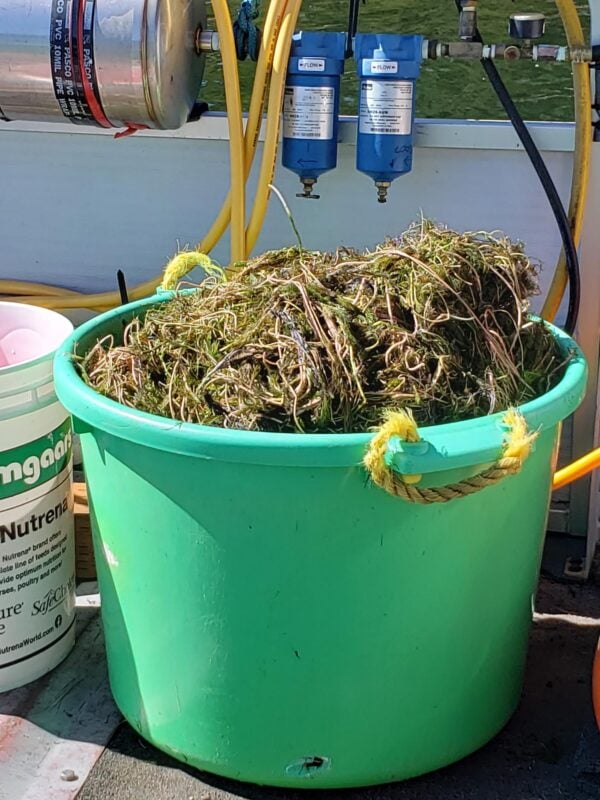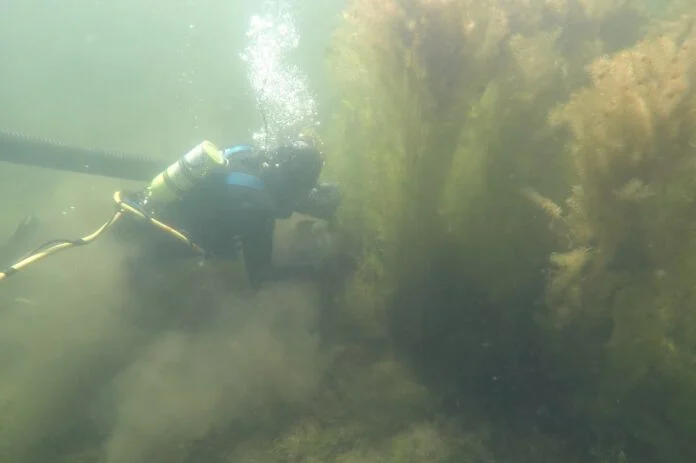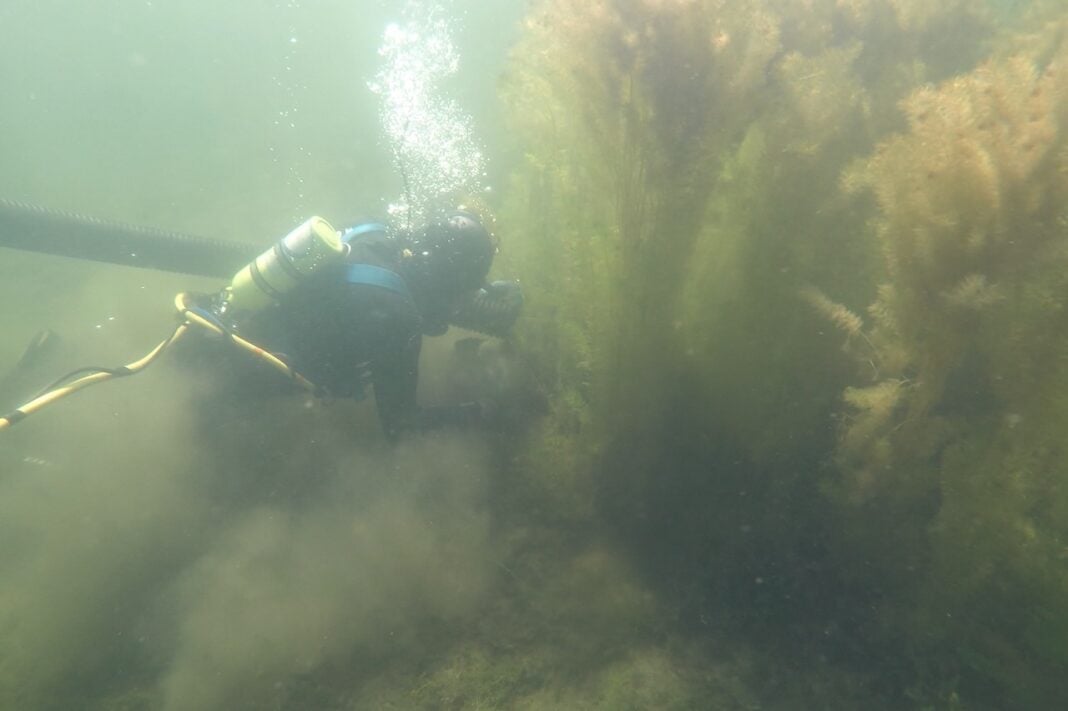Chemicals will not be used in Payette Lake this summer to combat an infestation of Eurasian watermilfoil, the Idaho State Department of Agriculture decided this week.
Chanel Tewalt, the director of ISDA, announced the decision Monday in a letter sent to Valley County, the City of McCall, and the Payette Lake Watershed Advisory Group.
“While ISDA’s plan is built on sound strategies, it is clear that citizens and vacationers around Payette Lake are not in agreement about what tools are acceptable to the community currently,” Tewalt said in the letter. “It appears there are many conversations that need to happen at the local level.”
With the first-ever use of herbicides in Payette Lake off the table for this summer, ISDA will not make any effort to reduce the lake’s milfoil infestation for the second straight year. The agency has been in charge of milfoil management in the lake since 2022.
As of last year, milfoil was estimated to cover about 183 acres in what state officials described as a “bathtub ring” around the lake’s 22-mile shoreline.
Local officials doubt plan for no removal
The state’s decision means that Payette Lake will go two consecutive summers without any milfoil removal for the first time since removal efforts began in 2001. Local officials had mixed reactions to the news.
Sherry Maupin, who chairs the Valley County Commission, told Valley Lookout she is “concerned” about the decision and is coordinating with the Payette Lake Watershed Advisory Group to “discuss pathways forward.”
“Milfoil spreads quickly so with no control for two consecutive years, the task ahead to control it becomes more problematic with each passing year,” Maupin said.
Maupin’s worries were echoed by Randy Fox, the Idaho Conservation League’s West Central Idaho director, who said allowing milfoil to grow unchecked for another year will make the problem “even more severe.”
“While we applaud the decision to pause chemical treatments in Payette Lake to address the Eurasian watermilfoil infestation, we are also disappointed that the department is failing to provide funding for any mechanical treatments for 2025,” Fox said.
McCall City Manager Forest Atkinson said that milfoil could harm water quality, recreation, and native plants if left unmanaged.
“McCall residents deeply value the health of Payette Lake as our sole source of drinking water,” Atkinson said. “That said, we understand the complexities of managing milfoil responsibly.”
Without donors like you, this story would not exist.
Make a donation of any size here
Payette Lake Watershed Advisory Group Chair Deb Fereday said the board will continue working with ISDA on “an effective, comprehensive plan for milfoil control and for sustained water quality.”
The advisory group—ISDA’s main outlet for sharing information about Payette Lake treatment plans—did not take a formal position opposing an herbicide treatment, but felt that herbicide alone would not be an effective solution, Fereday said.
“(The group) did see mechanical harvesting as an essential tool that should be ramped up on Payette Lake, although little or none has occurred in several years,” she said.
ISDA: mechanical removal ‘not cost-effective’
Historically, annual mechanical removal has been the main method of managing milfoil in Payette Lake. Any mechanical removal this summer, however, would be limited to areas around boat ramps to prevent spreading the invasive species to other lakes.
Tewalt’s letter pointed to limited funding that must be divvied up to fight invasive species in waterways across the state. She also cited ISDA’s belief that mechanical removal efforts are “not the most cost-effective plan.”
“While detrimental, Eurasian watermilfoil does not require the state to intervene in areas where the most cost-effective treatment is unacceptable to neighbors,” she said.
Mechanical removal involves divers hand-pulling or using suction dredges to “vacuum” the plant out of the lake, capturing any fragmented pieces to prevent further spread.

In 2022, ISDA spent about $120,000 on mechanical removal in Payette Lake. Aquatic Weed Solutions, the state’s contract removal company, removed all 77 acres of milfoil across 486 hours of work, according to records obtained by Valley Lookout under the Idaho Public Records Act.
The following year, Aquatic Weed Solutions billed the state $108,000 for 450 hours of removal work, which was not enough to clear 98 infested acres surveyed by ISDA.
ISDA elected not to contract for mechanical removal in 2024 after completing a survey that showed 183 acres of milfoil around the lake—an amount ISDA Chief Treatment Engineer Jeremey Varley said would be too much for mechanical removal alone.
“It was decided that rather than devoting even more limited resources, that the discussion would be needed to change the practice of mechanical removal and look into herbicide options for 2025,” Varley told Valley Lookout.
Another survey of the infestation was completed this month, with ISDA expected to present the results to the advisory group as soon as August.
ISDA remains confident in herbicide treatments
More broadly, opponents to the state’s chemical treatment proposal feared it could ultimately harm water quality and have unforeseen consequences.
Tewalt, the ISDA director, pushed back against criticisms of the agency’s chemical treatment plans, but said, “listening to local input is deeply important to me.”
“We not only have experts in manual and chemical control strategies, but we also employ an entire separate division dedicated solely to the safe use of pesticides according to state and federal law,” she said in the letter. “In short, we have a great deal of experience and expertise in these matters.”
In recent years, ISDA has led chemical treatments for milfoil in lakes across the state, including Lake Pend Oreille, Priest Lake, Hayden Lake, and Bear Lake.
Milfoil origins in Payette Lake

Milfoil was first found in Payette Lake in the late 1990s. An annual removal program led by Valley County began in 2001 and continued through 2022, at which point ISDA took control of the program.
Since 2005, the county pulled about 51 tons of milfoil from the lake, or about 6,400 pounds per year. 2009 was the only year in which milfoil was not removed from the lake under the county’s management.
Milfoil grows in shallow waters around the lake that receive sunlight, or areas up to about 30 feet deep. Each time the plant is broken—by a swimmer, boater, or even wave action—the fragment drifts off and settles elsewhere on the lakebed to sprout a new plant.
The plant can grow three to five feet in length each summer. If left unchecked, it could degrade water quality while also choking out boat propellers, fish habitat, and native plants.
Milfoil is among the most common invasive species in the United States, with populations known in every state except Hawaii and Wyoming.
What herbicides were being considered?
ProcellaCOR and SonarOne were the two primary herbicides ISDA was considering using in Payette Lake. Neither herbicide was expected to affect McCall’s lake-fed drinking water system or recreation on the lake, though irrigation restrictions would have been in place after applications.
The herbicides would be absorbed by the plants, which would then break apart and slowly decay on the lakebed. The slow decay, Varley said, would prevent phosphorus levels from spiking and potentially fueling a toxic blue-green algae bloom.
Varley’s statement aligns with water quality monitoring results from north Idaho’s Hayden Lake, which has been treated with milfoil herbicides many times over the last 15 years.
A 2022 report by the Hayden Lake Watershed Association found elevated levels of nitrogen compounds, specifically ammonia, after herbicide applications, but not increased phosphorus.
“The current evidence indicates that the invasives and their treatment neither adds or detracts to the phosphorus load of the lake,” the report said.
Milfoil management in other states
Studies from other states report mixed findings as far as the effectiveness of herbicide treatments in waters infested with Eurasian watermilfoil.
Herbicide treatments began in 2020 in lakes scattered around New York’s Adirondack Mountains. Subsequent studies have found “significant invasive milfoil control” while also noting “reductions in some native plants,” as reported by the Adirondack Explorer, a local news agency.
Monitoring completed by the Adirondack Park Agency found that ProcellaCOR, the herbicide used in the lakes, “diluted into the water column as expected and was undetectable within three days at all of the lakes.”
Meanwhile, an 11-year study of 28 Wisconsin lakes observed milfoil growth in lakes that were not managed as well as lakes that received herbicide treatments.
The study found that “herbicide treatment can be an effective tool,” but concluded that “a lack of active management does not necessarily condemn a lake to complete (milfoil) invasion.”






